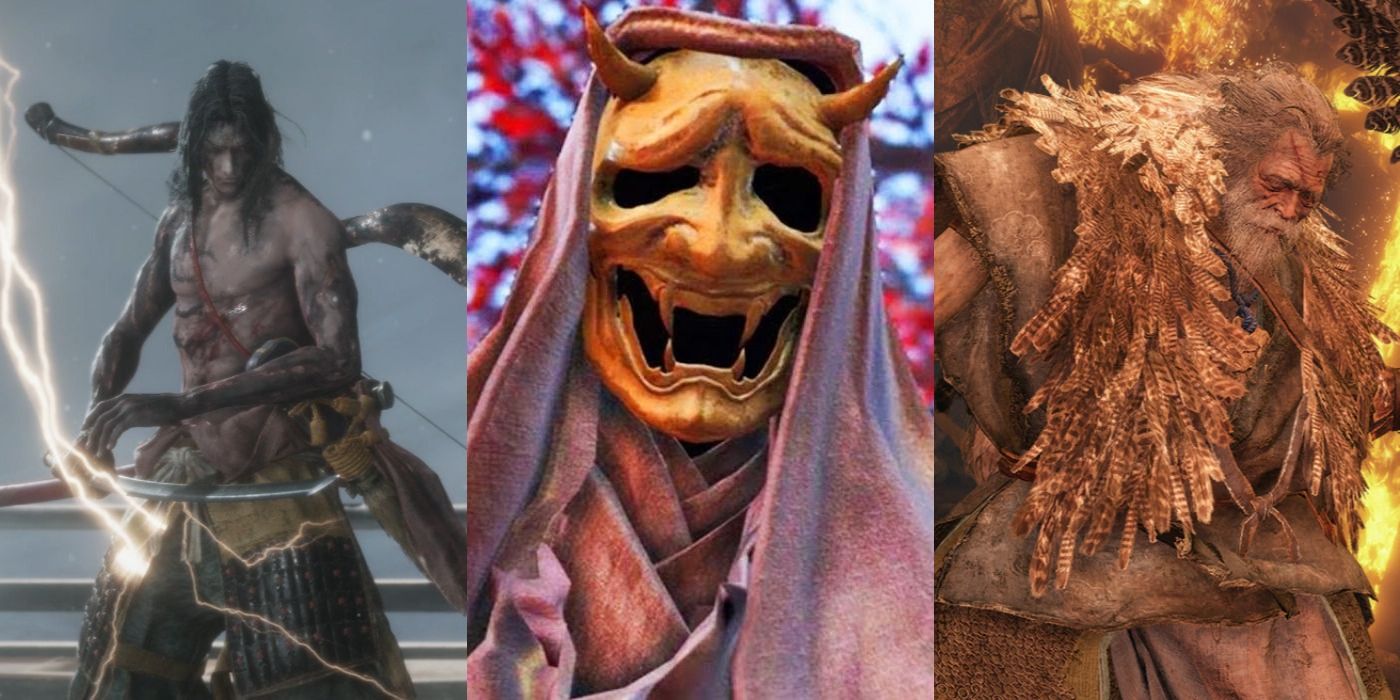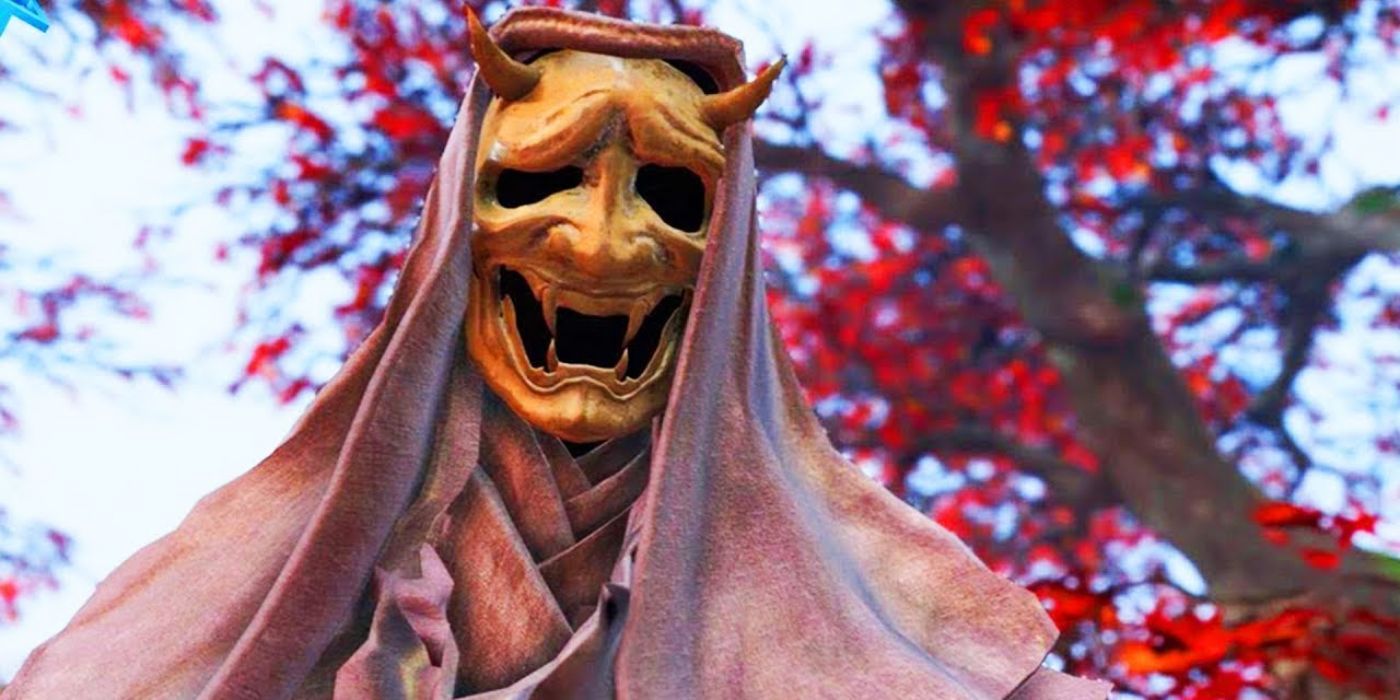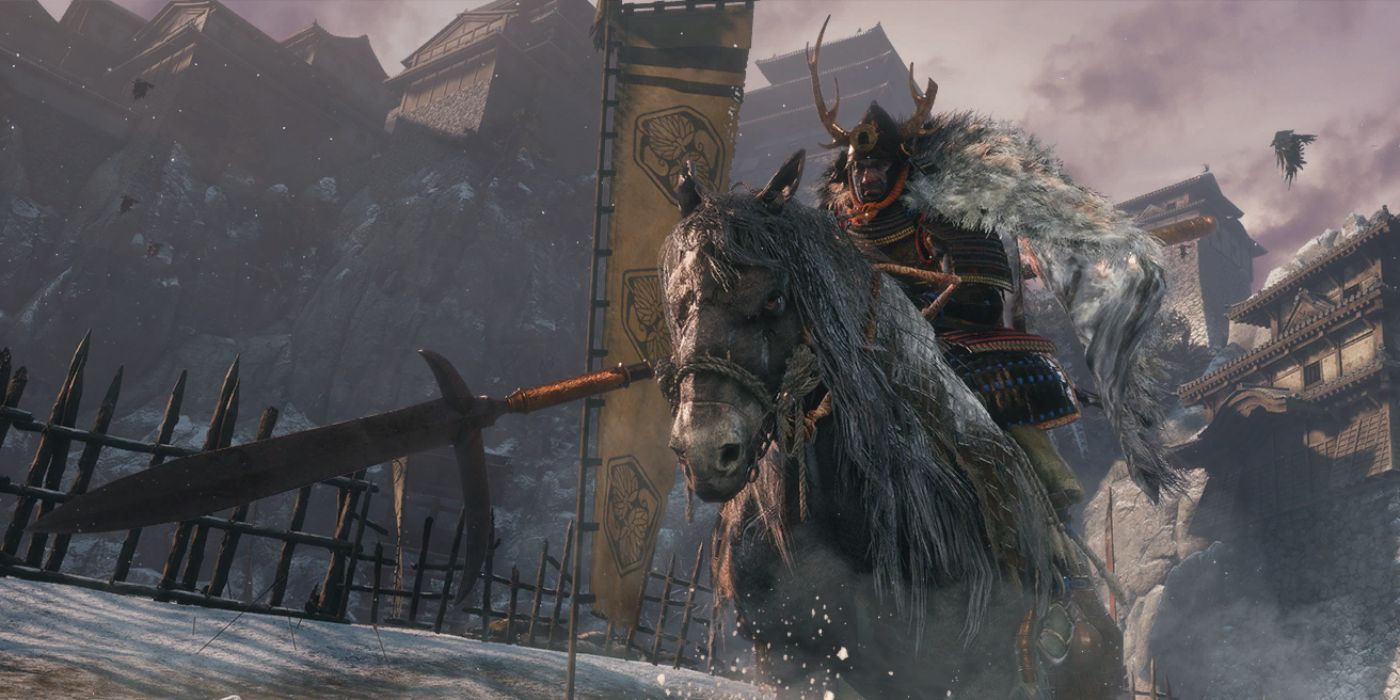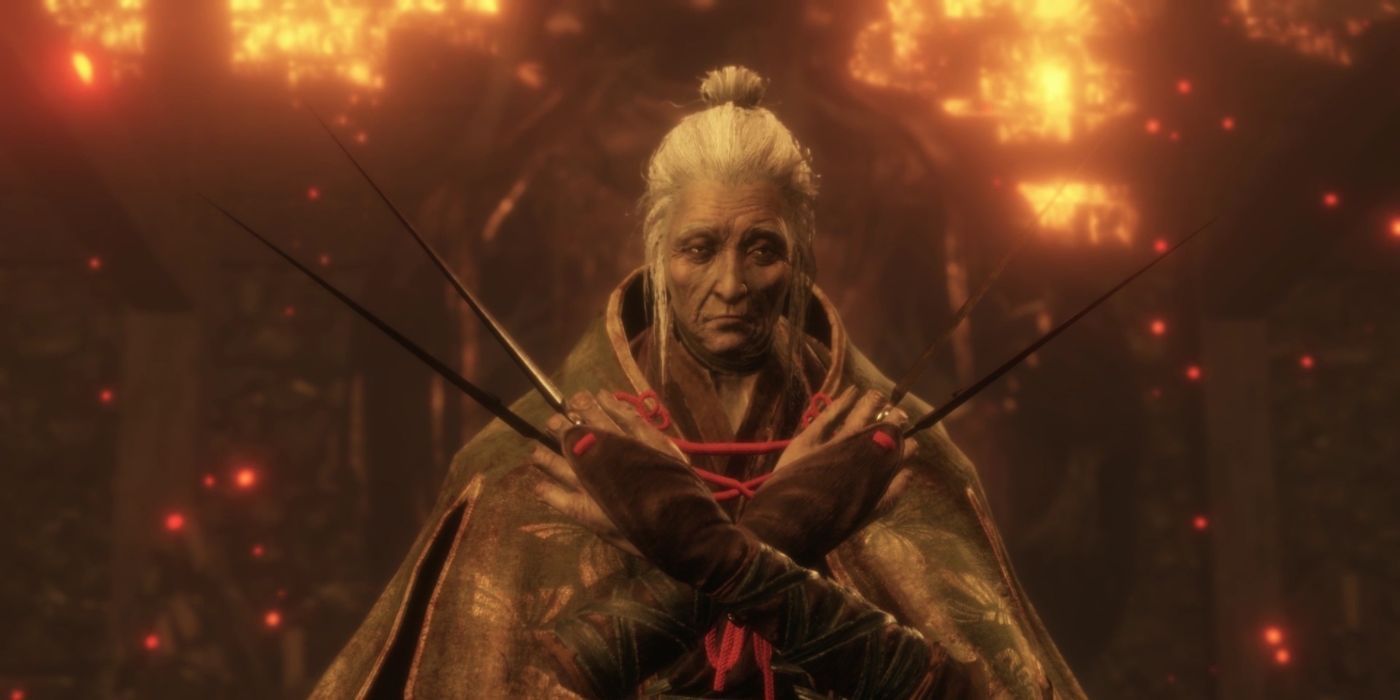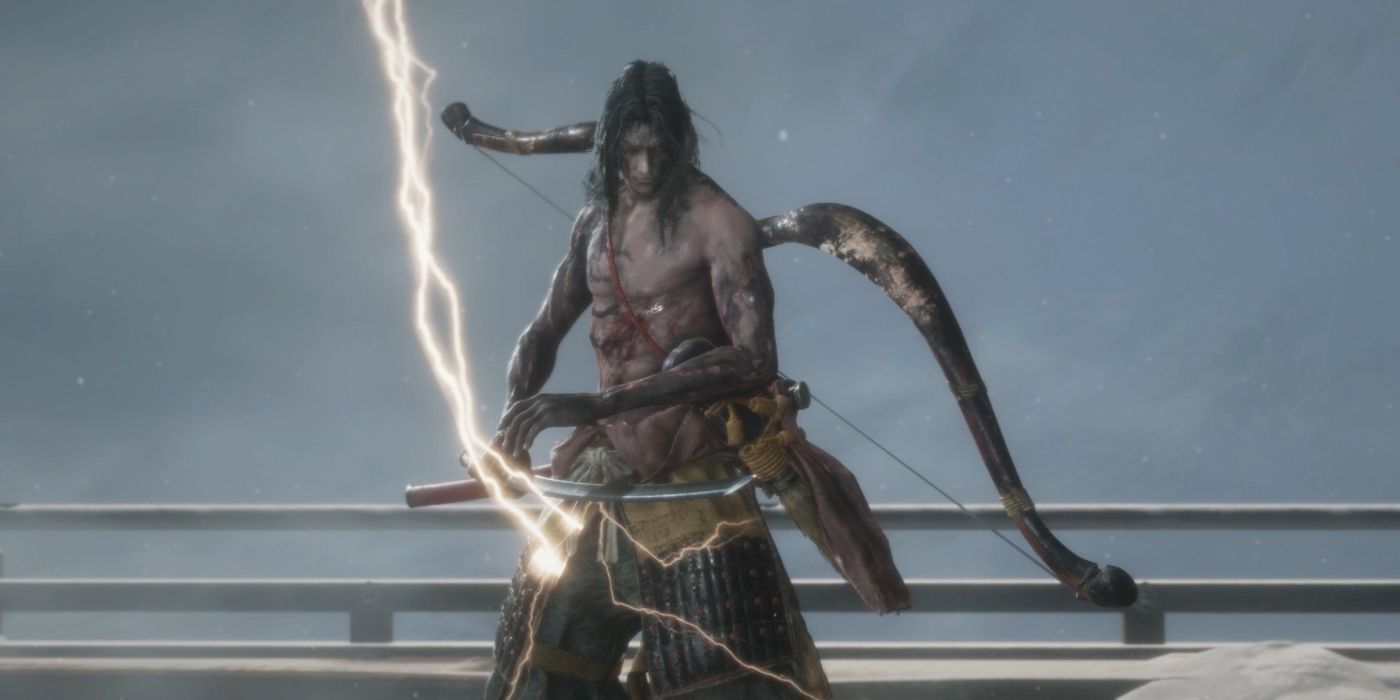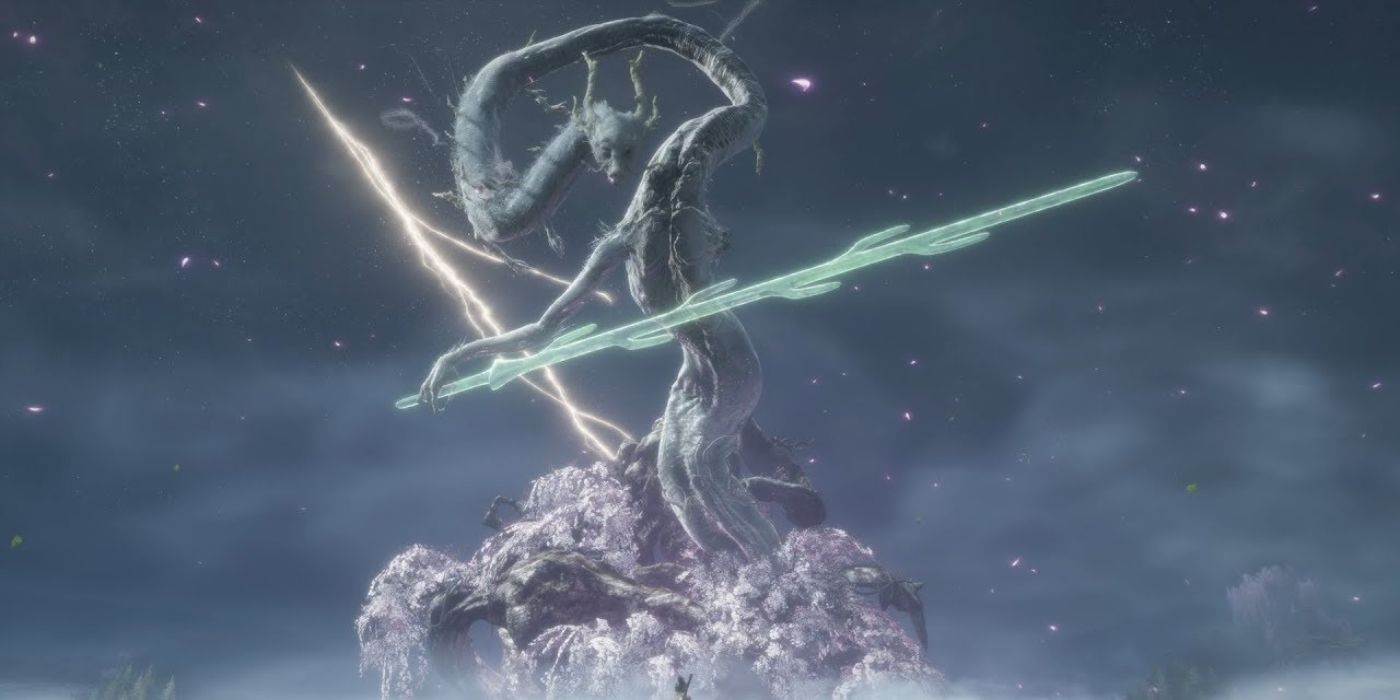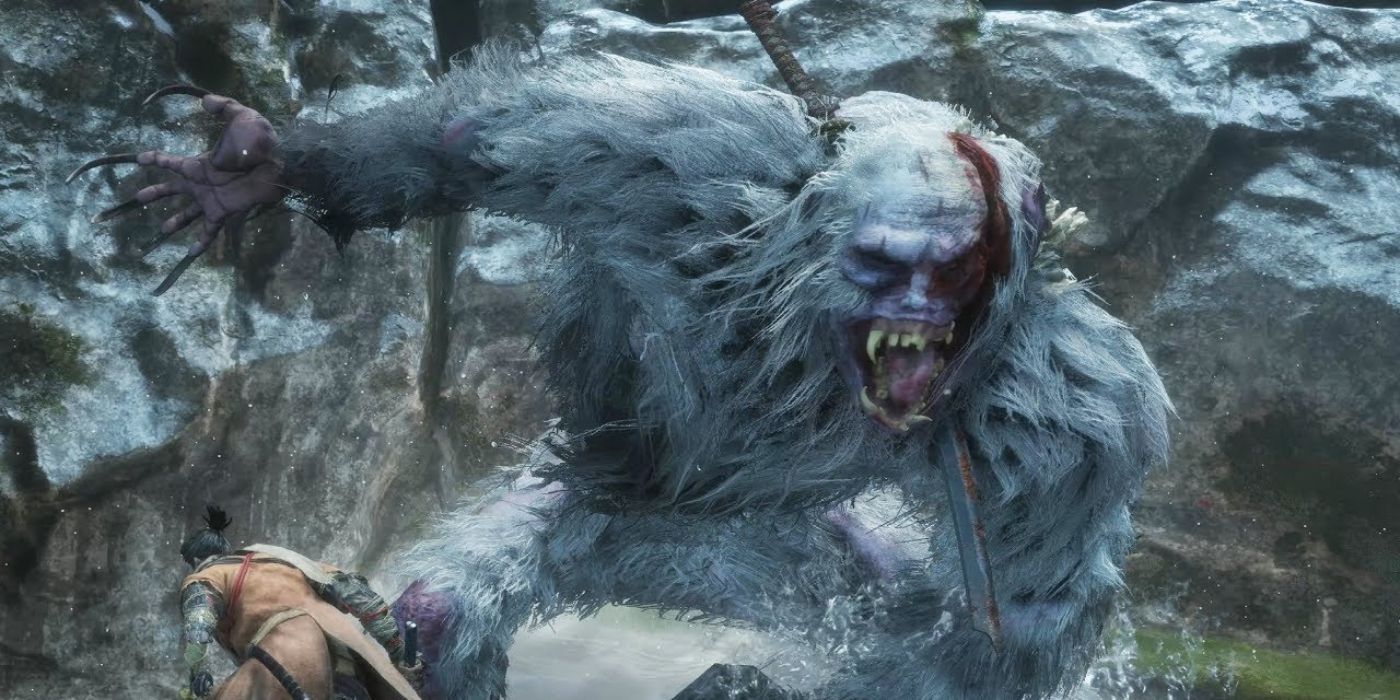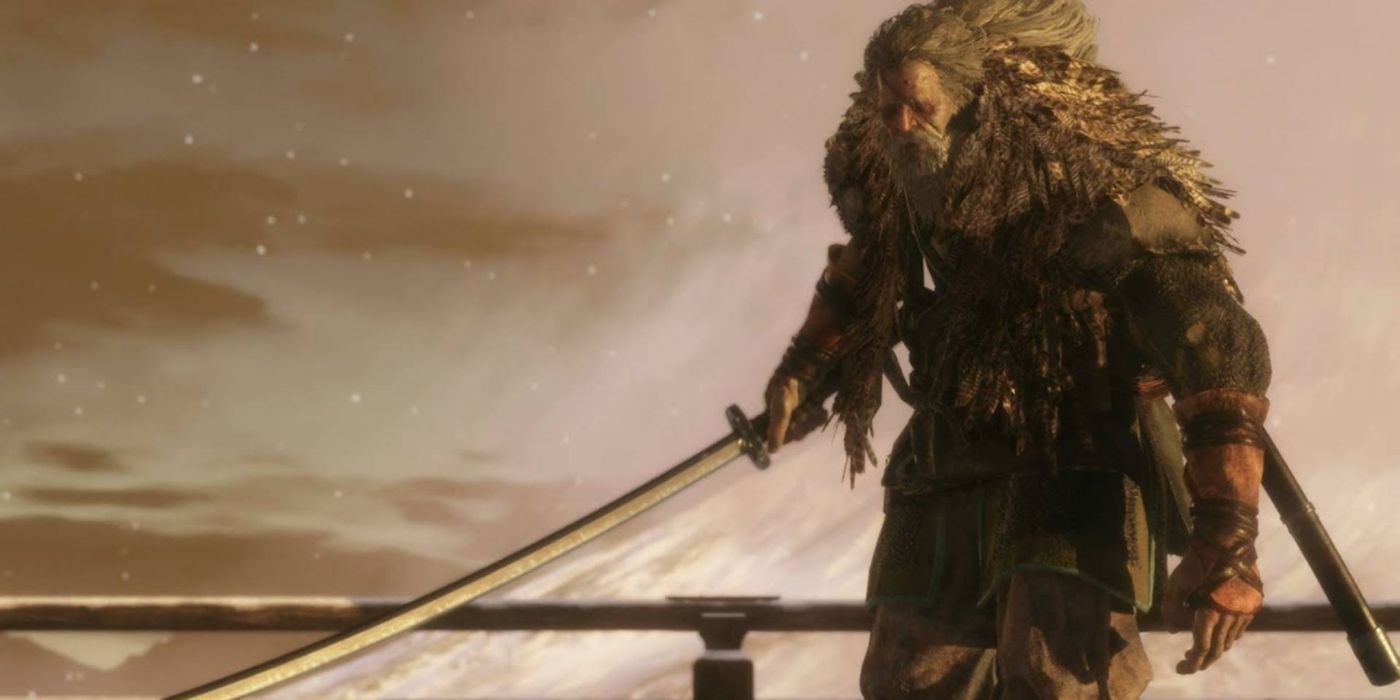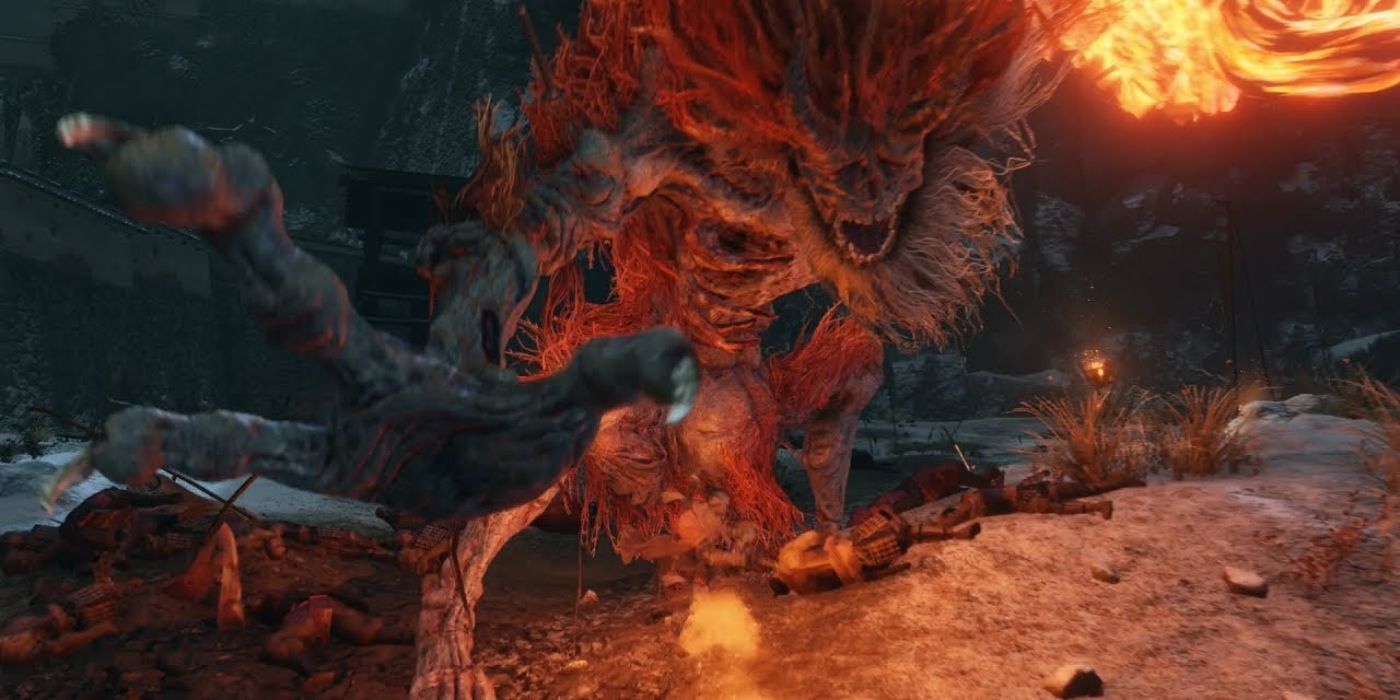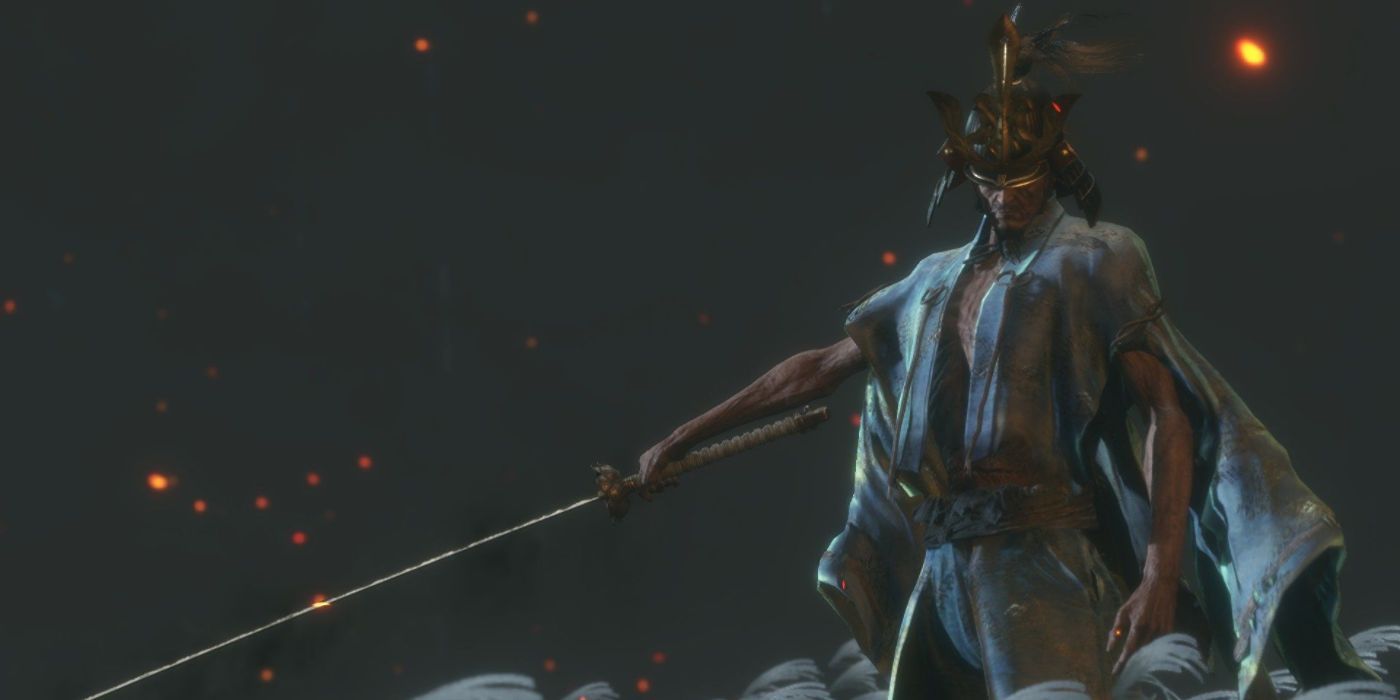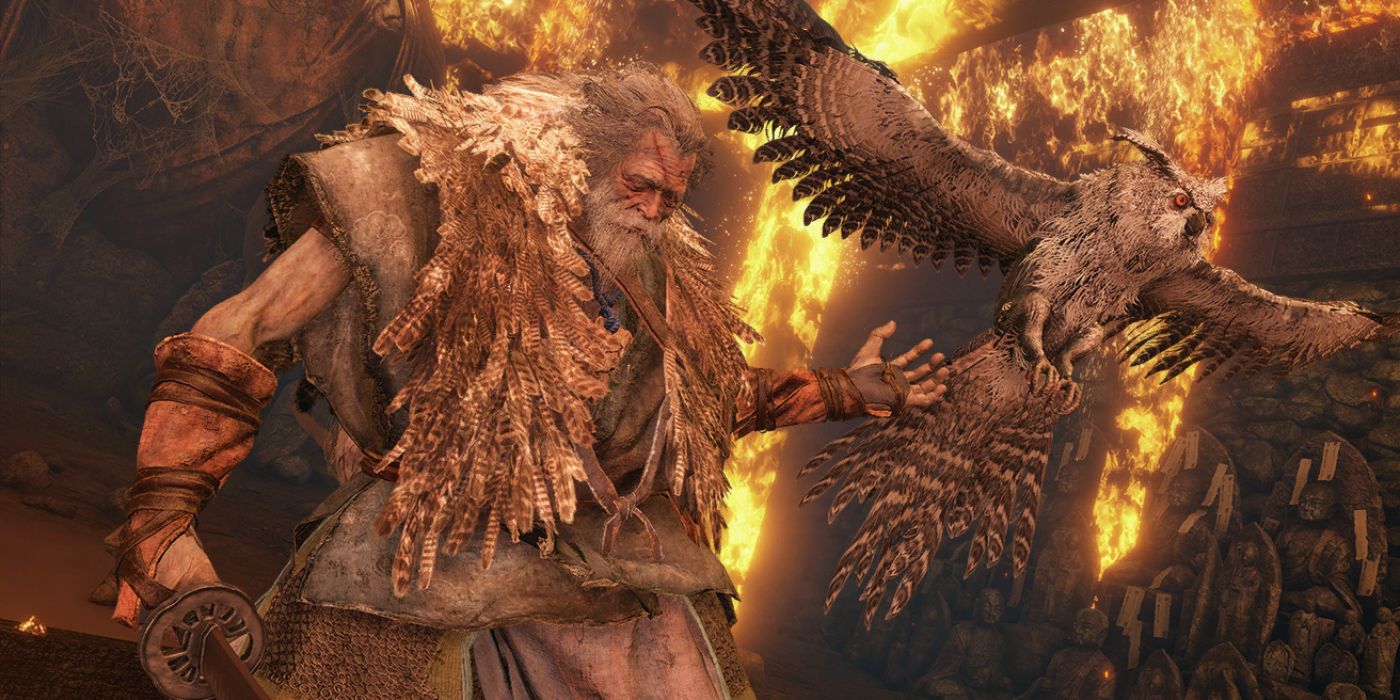FromSoftware's 2019 title Sekiro: Shadows Die Twice had a daunting challenge at its release. As the studio successor to the Dark Souls series, it had high expectations to live up to, while needing to be its own unique experience as a new entry in the Soulsborne franchise.
One way in which Sekiro more than lived up to its family of award-winning titles is its dynamic and challenging bosses. Colossal, overpowered, and merciless, this roster of enemies represents everything that makes its Souls-like boss fights some of the best in the industry while featuring narrative and gameplay mechanics that are uniquely characteristic to Sekiro.
True Corrupted Monk
At the gates of Fountainhead Palace, one of the Soulsborne series' most immersive locations, players are challenged by a guardian monk -- an imposing figure wearing a porcelain demon mask and wielding a naginata polearm. Some may be deceived into thinking that this is merely a reskin of an earlier boss that guarded a sacred cave in Mibu Village. This boss, however, features two additional stages that embody the "true" corruption denoted by her title, including her ability to make phantom copies of herself.
In the final stage, she reveals her true form, as an enormous centipede emerges from her body, crudely puppeteering the boss from within. Here, the True Corrupted Monk's attacks become more wild and unpredictable, forcing players to draw from all their skills to overcome her.
Gyobu Masataka Oniwa
Atop his larger-than-life mount, Gyobu storms a battlefield outside of Ashina Castle, determined to stop Wolf's progress where his minions failed. Fighting this imposing samurai in direct combat is a fool's errand, as he is able to close and expand the distance between the player at incredible speed thanks to his horse Onikage -- named in reference to one of the game's inspirations, the classic Tenchu series.
Here, patience is key, as players must wait for the opportune moment to grapple onto Gyobu Masataka's armor, pulling them in for a few momentary slashes before a temporary retreat becomes necessary. As the first true boss fight in the game, it's an excellent introduction to Sekiro's paced and rhythmic boss combat that sets the stage for all the colossal foes and challenges ahead of the player.
Lady Butterfly
The second major boss fight in the game, Lady Butterfly represents Wolf's first confrontation with his past. This shinobi was a mentor from Wolf's youth and a warrior who fought alongside his adoptive father, Owl. Now in old age and corrupted by the thirst for immortality, Lady Butterfly finds herself at odds with her former pupil, resulting in one of the game's most challenging boss fights.
Her difficulty principally stems from her speed. In the blink of an eye, she can zip from one end of the arena to the other with a seemingly infinite reserve of stamina. Players are advised to adequately level up their endurance before this boss battle, lest they find themselves outpaced by this masterful shinobi.
Genichiro
General Genichiro Ashina serves as the primary antagonist for most of the story in Sekiro: Shadows Die Twice. A young warlord in dogged pursuit of immortality, he seeks to use Lord Kuro's life-giving Dragon's Blood to save his kingdom from invasion. This places him in direct conflict with Wolf, Kuro's guardian, from the game's prologue and sets them up for a climactic swordfight at the conclusion of Sekiro's first act.
This memorable encounter takes an unexpected turn when, at its midpoint, Genichiro sheds his armor and draws on unholy lightning magic to strengthen him for another bout of swordplay. In a game with such an emphasis on sword fighting, Genichiro is also one of few bosses capable of ranged combat, making the general as deadly at a distance as he is within his blade's reach.
Divine Dragon
The fight with the Divine Dragon is not terribly long or even very difficult by FromSoftware's standards, but its cinematic scope is in a class of its own. At its outset, players are transported into the Divine Realm where the dragon grows out of the Everblossom tree and towers over mountaintops, wielding a celestial pronged sword. Stylistically, the encounter resembles the battle against Rom and her brood of spiders, one of the best boss fights in FromSoftware's Bloodborne.
In its first stage, players are required to slay a host of rotting dragons before standing up to the Divine Dragon itself. Wolf must then employ the power of mystical lightning -- seen wielded earlier by Genichiro -- in order to finally put the plague-ridden dragon to rest. It's a beautiful and unique fight that easily ranks among the best in Sekiro.
Guardian Ape/Headless Ape
In the depths of the Sunken Valley, players will encounter the Guardian Ape -- one of the most dynamic boss designs in the entire Soulsborne series. In its first stage, the Guardian Ape’s defining design characteristic is the enormous katana that pierces its neck — the remnants of an old fight among other scars. Once the boss’s health is depleted, Wolf delivers a final blow by removing the sword, which severs the monster’s head.
After a grueling fight, it’s a genuine moment of relief. The battle, however, is far from over. As with the later fight with the True Corrupted Monk, a giant centipede emerges from the Guardian Ape’s body, reanimating the boss for a second and even more difficult round of combat. It's the first time such a thing happens in the game and represents an unforgettable moment of narrative design that elevates the trope of a resurrecting boss with a surprising lore-driven twist.
Great Shinobi Owl
At the game's structural midpoint, players come face-to-face with their greatest challenge yet: the Great Shinobi Owl, Wolf's adoptive father. In a dynamic plot twist, Owl also falls into a lust for immortality and attempts to kill his son to get at the Divine Heir Kuro. This spurs a fight to the death between father and son that represents one of the most tragic stories in the Soulsborne series.
Owl's difficulty far exceeds any preceding bosses, with a nimble set of attacks that belie his hulking figure and an assortment of shinobi tricks that he turns back upon Wolf. It's an unforgettable fight that's worth a replay if players missed it the first time around.
Demon Of Hatred
The Demon of Hatred is one of Sekiro’s few optional bosses, only available to the most adventurous players who dare to stray from the main campaign in the game’s final act. Outside the burning Ashina Castle in the field, where the player fought Gyobu Masataka Oniwa, stands an enormous fiery demon like no other foe in Sekiro.
Missing its left arm and wearing tattered orange cloth, it isn’t hard to deduce that this monster is Wolf's ally, the Sculptor, finally transfigured by Shura into the embodiment of hatred. It’s a long and merciless fight that recalls the best of classic Dark Souls boss battles — enormous overpowered foes, multiple stages with unique attacks, and an intriguing lore-driven backstory.
Isshin - Sword Saint
After the game’s third encounter with Genichiro, he turns the Black Mortal Blade against himself and summons the spirit of his departed grandfather —Emperor Isshin in his youth, a legendary swordsman of unparalleled skill. This battle represents the final boss of Sekiro’s main campaign and the game’s most difficult swordfight.
This owes not only to Isshin’s capacity for one-hit kills but also to his vast roster of attacks, each with a unique pattern of counters and ripostes. Any of this boss’s three stages could constitute a unique boss fight, cycling through an array of deadly shinobi weapons that progressively increases the difficulty across the encounter.
Owl (Inner Father)
There is a very small subset of Soulsborne fans for whom Sekiro is not challenging enough. For those few, FromSoftware developed the Gauntlet of Strength mode. Here, players have the opportunity to fight enemies and bosses from the game in progressively difficult stages where death resets all progress. Near the conclusion of the final challenge, players face off against Owl once more, but this time, he is presented as he was in his prime.
Even more interesting is the boss's parenthetical title "Inner Father," which suggests that the fight is with the version of Owl that lives in Wolf's mind. This ideation of the great shinobi is faster, stronger, and accompanied by a ghostly owl that can both distract and deal damage to the player. It's a grueling fight even for veterans of the Dark Souls series and packs all of what makes Sekiro: Shadows Die Twice a classic into one unforgettable battle.

